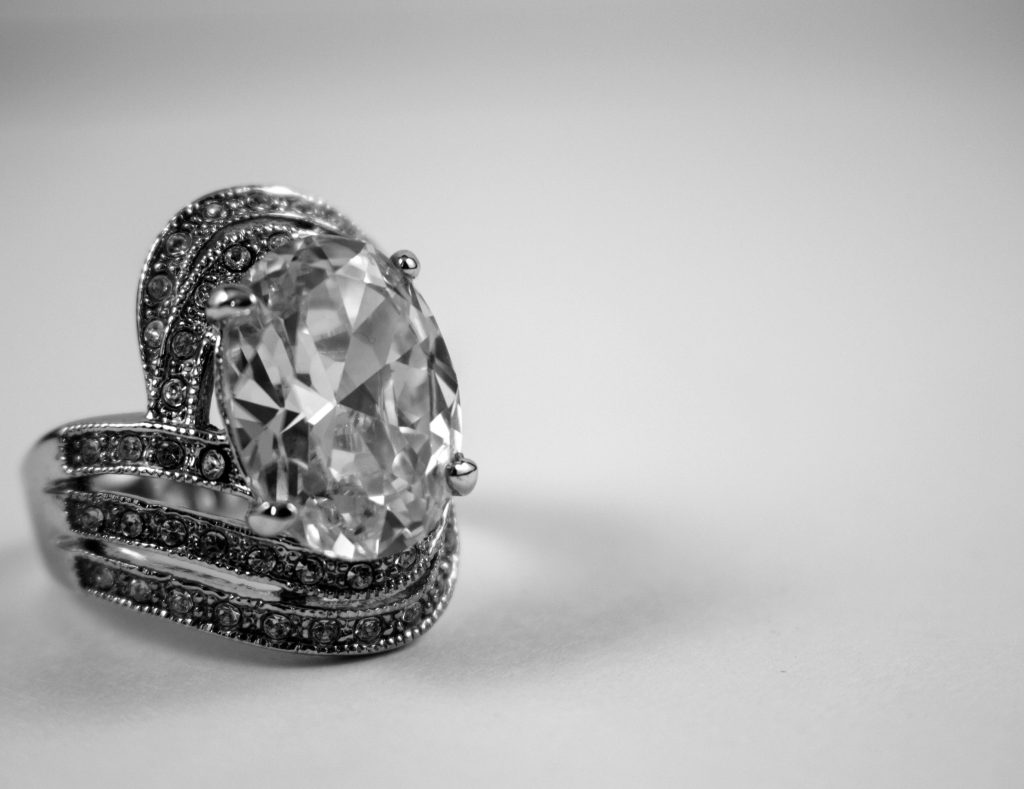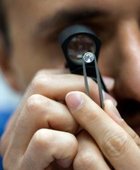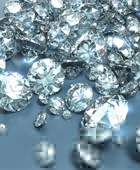Diamonds have long been cherished for their beauty, rarity, and durability, but much of their allure depends on how they are cut. A diamond’s cut not only determines its shape but also how it reflects light, which directly impacts its brilliance, fire, and overall visual appeal. Diamond cutting, however, has undergone a dramatic evolution from ancient, rudimentary techniques to today’s highly precise, technologically advanced methods.
In this article, we will explore the rich history of diamond cutting, examining the early techniques, major milestones in its development, and the modern tools that have revolutionized the process. This journey through the evolution of diamond cutting will reveal how advancements in this craft have enhanced both the beauty and value of diamonds.

Early History of Diamond Cutting: The Rough Beginnings
The art of diamond cutting is relatively recent in the long history of diamond use. For centuries, diamonds were worn in their natural, uncut form, as ancient civilizations lacked the technology to cut the world’s hardest substance effectively. The earliest diamonds were prized for their natural crystal forms, particularly the octahedron shape, which was often polished but not cut.
1. The First Polishing Techniques (14th-15th Century)
The first significant shift in diamond treatment occurred during the late Middle Ages. Around the 14th century, European lapidaries (stone cutters) began experimenting with diamond polishing techniques. They discovered that diamond dust—created by rubbing one diamond against another—could be used to polish the stone’s surface. This process, known as “point cutting,” preserved the natural octahedral shape of the diamond but gave it a smoother, more reflective surface.
Though rudimentary by modern standards, point cutting represented an important step forward in diamond cutting. These early efforts to polish diamonds allowed jewelers to highlight the stone’s natural brilliance and paved the way for more advanced techniques.
2. The Introduction of the Table Cut (16th Century)
The next major advancement in diamond cutting came in the 16th century with the development of the “table cut.” This technique involved flattening the top of the diamond to create a large, central facet, or “table,” while still preserving the overall shape of the stone. This development was significant because it allowed for greater light reflection, making the diamond appear brighter and more brilliant.
Table cuts also featured additional, smaller facets along the edges of the stone, though the overall number of facets remained relatively low compared to modern cuts. Despite these limitations, the table cut marked the beginning of a more systematic approach to diamond cutting, as jewelers started to experiment with facet arrangements to maximize the stone’s optical qualities.
3. The Emergence of the Rose Cut (17th Century)
In the 17th century, diamond cutting advanced with the introduction of the rose cut, which took its name from the shape of a blooming rosebud. The rose cut featured a flat bottom and a domed top, with triangular facets arranged symmetrically to create a faceted crown. This technique allowed for a more intricate cut with multiple facets, enhancing the stone’s brilliance and aesthetic appeal.
The rose cut quickly gained popularity in Europe, where it became a fashionable choice for diamond jewelry. However, the rose cut’s effectiveness in capturing and reflecting light was limited compared to later developments, as its flat base prevented light from passing through the stone as effectively as modern cuts do.
The Birth of Brilliant Cutting: A Scientific Approach (17th-19th Century)
The rose cut laid the foundation for the development of the “brilliant cut,” a pivotal moment in the history of diamond cutting. Unlike earlier methods, which were largely based on trial and error, brilliant cutting was influenced by an emerging understanding of the physics of light and optics. By the late 17th century, diamond cutters began to experiment with different facet arrangements to enhance the diamond’s ability to reflect light internally, leading to the creation of a cut that has defined the diamond industry for centuries.
1. The First Brilliant Cut (Late 17th Century)
The first versions of the brilliant cut emerged in the late 1600s, attributed to Venetian diamond cutter Vincenzo Peruzzi. Peruzzi’s cut featured a significantly higher number of facets—33 on the crown and 25 on the pavilion (the lower half of the diamond)—which allowed for increased light reflection and a more dazzling appearance.
This early brilliant cut, though primitive compared to modern versions, introduced key elements that remain essential to diamond cutting today, including the round shape and carefully calculated facet angles. It also marked the beginning of a more scientific approach to diamond cutting, as cutters began to understand how different facet arrangements could manipulate light to enhance a diamond’s sparkle.
2. Advances in Brilliant Cutting: The Old Mine Cut (18th-19th Century)
By the 18th century, the brilliant cut had evolved into a new variation known as the “Old Mine Cut.” This cut was typically used on diamonds mined in Brazil, which had replaced India as the world’s primary diamond source at the time. The Old Mine Cut featured a squarish shape with rounded corners, as well as a smaller table and larger culet (the point at the bottom of the diamond) compared to later cuts.
Although the Old Mine Cut was less precise than today’s cuts, it represented a major improvement over previous techniques. It was designed to maximize the carat weight of the diamond, as the technology for more precise cutting was still in its infancy. The Old Mine Cut remained popular through the 19th century, particularly during the Georgian and Victorian eras, and it laid the groundwork for the development of the modern round brilliant cut.
3. The Transition to Modern Precision: The Old European Cut (Late 19th Century)
The late 19th century saw the evolution of the Old Mine Cut into the “Old European Cut,” which bore a closer resemblance to the modern round brilliant cut. The Old European Cut featured a rounder shape, larger table, and more symmetrical facets, making it a precursor to the modern brilliant cut that would dominate the 20th century. Diamond cutters during this period had begun to experiment with more sophisticated techniques, aided by advancements in cutting tools and an improved understanding of diamond geometry.
The Old European Cut is notable for its balance between brilliance and weight retention, as cutters still sought to preserve as much of the rough diamond as possible. However, the quest for maximum brilliance and precision would take a giant leap forward with the introduction of modern diamond-cutting technology in the 20th century.
The Dawn of Modern Precision: The 20th Century
The 20th century marked a turning point in diamond cutting, as technological advancements enabled cutters to achieve a level of precision and symmetry that was previously impossible. New cutting tools, mathematical models, and a deeper understanding of light behavior helped diamond cutters create diamonds with unparalleled brilliance and fire. The most significant breakthrough during this period was the perfection of the modern round brilliant cut, a design that continues to dominate the diamond market today.
1. The Modern Round Brilliant Cut (1919)
One of the most important milestones in the history of diamond cutting was the development of the modern round brilliant cut by Marcel Tolkowsky in 1919. Tolkowsky, a mathematician and diamond cutter from a renowned family of jewelers, applied scientific principles to determine the ideal proportions for a diamond to achieve maximum brilliance and fire. His book, Diamond Design, outlined the specific angles and facet arrangements that would optimize the reflection and refraction of light within the stone.
Tolkowsky’s round brilliant cut features 58 facets, including 33 on the crown and 25 on the pavilion, with precise angles to ensure that light enters the diamond, reflects internally, and exits through the top in a dazzling display of sparkle. This cut became the standard for diamonds and remains the most popular and iconic diamond shape to this day.
2. Advancements in Diamond-Cutting Tools
The modern round brilliant cut would not have been possible without the advancements in diamond-cutting tools during the 20th century. The traditional methods of using diamond dust and simple polishing wheels were gradually replaced by more sophisticated machinery, allowing for greater precision and control.
- Laser Cutting Technology: One of the most significant innovations in modern diamond cutting was the introduction of laser technology in the 1960s. Laser cutting allows diamond cutters to achieve an unprecedented level of accuracy, making it easier to cut facets at precise angles. Lasers also enable cutters to minimize waste, as they can make finer and more delicate cuts without compromising the integrity of the diamond.
- Computer-Aided Design (CAD) and Computer-Aided Manufacturing (CAM): In the late 20th and early 21st centuries, the integration of CAD and CAM systems revolutionized diamond cutting. These technologies allow diamond cutters to create virtual models of a diamond and simulate the cutting process before making any physical alterations. CAD and CAM systems also enable cutters to experiment with different facet arrangements and designs, leading to the creation of new and innovative cuts.
3. Fancy Cuts and the Expansion of Diamond Shapes
While the round brilliant cut remains the most popular diamond shape, the 20th century also saw a growing interest in “fancy cuts” or non-round diamond shapes. Advances in cutting technology made it possible to create more intricate and unusual cuts, catering to diverse consumer tastes and preferences.
Some of the most popular fancy cuts include:
- Princess Cut: The princess cut, developed in the 1960s, is a square or rectangular cut that combines the brilliance of a round cut with a modern, angular shape. It became one of the most popular choices for engagement rings due to its bold, contemporary look.
- Emerald Cut: The emerald cut is a rectangular shape with step-cut facets, known for its clean lines and understated elegance. Although it doesn’t have the same level of brilliance as a round cut, its long facets create a unique “hall of mirrors” effect that emphasizes clarity and color.
- Cushion Cut: This cut, also known as the “pillow cut,” dates back to the 19th century but saw a resurgence in popularity during the 20th century. It features rounded corners and large facets, offering a vintage-inspired look with a soft, romantic appearance.
- Heart, Oval, and Pear Cuts: These shapes, known for their distinctive forms, also gained popularity as advancements in cutting tools allowed for greater precision in creating complex designs.
Scientific Approaches to Diamond Cutting: Maximizing Brilliance and Fire
Modern diamond cutting is no longer based on guesswork or simple artistry; it is grounded in the science of light. Understanding how light interacts with a diamond is essential to achieving maximum brilliance, fire, and scintillation—three key aspects that determine a diamond’s visual appeal.
- Brilliance: This refers to the white light that reflects from the surface and interior of the diamond. A well-cut diamond will reflect the majority of light that enters the stone back to the viewer’s eye, giving it a bright and dazzling appearance.
- Fire: Fire refers to the dispersion of light into its spectral colors, creating flashes of colored light within the diamond. Achieving optimal fire depends on the precise arrangement and angles of the diamond’s facets.
- Scintillation: Scintillation is the sparkle or flashes of light that occur when the diamond moves. A well-cut diamond will display a balanced pattern of bright and dark areas, enhancing its overall sparkle.
To maximize these qualities, diamond cutters today rely on precise mathematical calculations and advanced tools, including lasers and computer simulations, to achieve perfect symmetry and facet alignment.
Modern Ethical Considerations in Diamond Cutting
In addition to technological advancements, modern diamond cutting has been influenced by ethical concerns related to the sourcing and processing of diamonds. Today, many diamond companies strive to uphold ethical standards throughout the cutting process, ensuring that the diamonds are not only beautiful but also sourced and cut responsibly.
- Conflict-Free Diamonds: The demand for conflict-free diamonds has grown significantly in recent years, with consumers seeking assurance that their diamonds are not linked to human rights abuses or violence. Companies that cut and sell diamonds often rely on certification systems, such as the Kimberley Process, to verify that their stones are ethically sourced.
- Sustainability in Cutting Practices: Some diamond-cutting companies have adopted sustainable practices to minimize their environmental impact. This includes reducing water usage, recycling diamond dust, and using energy-efficient cutting tools. In addition, the rise of lab-grown diamonds—created in controlled environments using sustainable methods—has provided an ethical alternative to mined diamonds, offering consumers a guilt-free choice without compromising on quality or beauty.
Conclusion: The Future of Diamond Cutting
The evolution of diamond cutting has come a long way from the early, rudimentary techniques of point and table cuts to today’s laser-guided, computer-assisted methods. Technological advancements have not only improved the precision and brilliance of diamond cuts but have also expanded the range of shapes and designs available to consumers. As cutting techniques continue to evolve, driven by new technologies and scientific insights, the future of diamond cutting promises even greater innovations in both aesthetics and sustainability.
Looking ahead, the diamond industry is likely to see further advancements in precision cutting tools, as well as increased demand for ethically sourced and sustainably processed diamonds. The continued development of lab-grown diamonds may also play a significant role in shaping the future of the craft, providing an ethical and eco-friendly option for consumers who value both beauty and responsibility.




